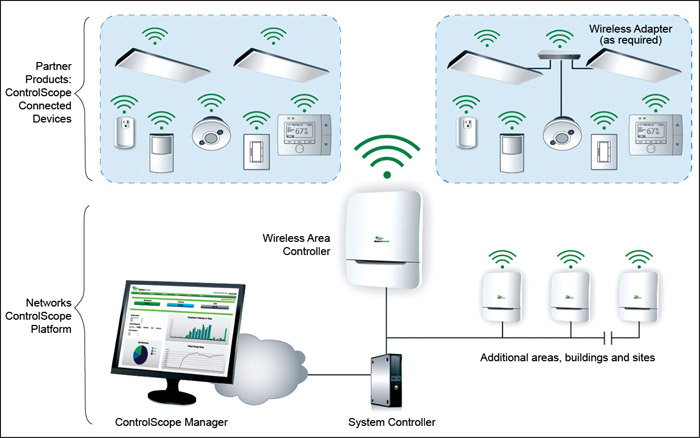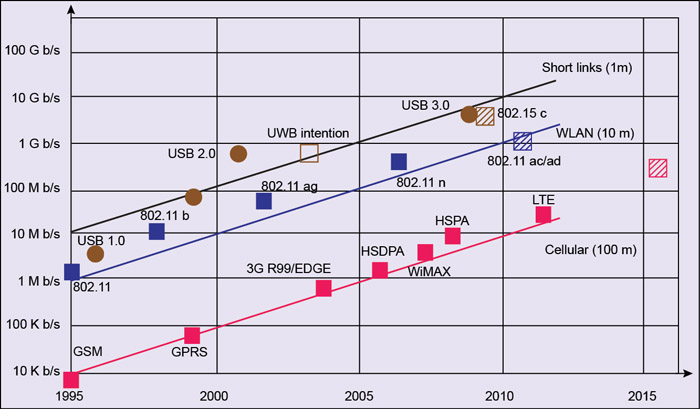Wireless communication is growing rapidly to touch every aspect of our lives. Besides communication, it now allows technologies like Machine to Machine (M2M) and the Internet of Things (IoT) to evolve, for instance.

While there are modules that transmit the data from our body to the cloud, there are also modules that send that data to our mobile phones or laptops for us to analyse. Then there are modules that can be embedded in our shoes so we can know, for instance, how much we have walked or run, for how long, and how many calories we have burnt in the process. For all this, we need to use power-efficient wireless systems with small form factor, high reliability, small size and low cost. The systems should also have less interference. Obviously, the responsibility of design engineers is increasing.
Communication interfaces
The integral part of a device that enables communication is an interface. No communication is possible without it. But the important thing to understand is that, the interface should allow minimum power consumption during data transfer and be efficient at the same time. With wired communication, the efficiency has not been much of a concern, though power has always been. Now, with the advent of wireless communication, the wired interfaces are getting replaced with wireless interfaces like interface modules and smart sensors. Even microcontrollers (MCUs) are getting integrated with the transmitters to provide better interfaces. Such interfaces can help reduce wires and overcome the obstacles that make hard wiring impossible or impractical.
Complex communication interface. It is an interface, generally for an 8-bit MCU, that allows integration of a transceiver (sub-GHz) with an ultra-low-power 8051 core to allow a data transmit rate of up to 256kbps and a maximum output power of about 20 decibel-milliwatts (dBm). It is called complex interface because the MCU is integrated with the transceiver on the same module. It is suitable for applications related to IoT, wireless connectivity and low-power processing.
Interface with frequency hopping spread spectrum technology. It is an interface that allows rapid signal transmission over multiple frequency channels. It operates in a frequency band of 900MHz to communicate between the operator interface and individual, or groups of smart sensors. The 900MHz band is Federal Communication Commission (FCC) licence-free, has lower signal loss than other available frequency bands, offers greater signal transmissions through obstructions and avails greater transmission distances. A designer can use this interface to replace the RS-485 wiring that is used between the smart sensor and the personal computer or human-machine interface (HMI). One can also use it to design devices that can work on multiple frequency channels.

Interface for medical equipment. Some medical equipment like electroencephalograph (EEG)/polysomnography (PSG) holter monitor or a blood glucose monitor (BGM) need wireless interfaces to allow the patients mobility and provide continuous data for tracking. These interfaces have multiple MCUs replaced with a single MCU on a module, so as to reduce the component count and to provide a continuous reading even if the transceiver fails. It also applies to such wearable devices as a wristband to warn against possibility of a heart attack.
Wireless interface module. This module, based on Bluetooth wireless technology, supports display serial interface (DSI) protocol. This decreases the requirement of an external power source, thus further decreasing the number of components on the module. Such modules receive power from software drives, allowing the engineers to design a compact hardware without any requirement to search for an appropriate external power source.
Wireless transceiver with serial data interface. It supports 2×3 multiple input and multiple output (MIMO) configurations for a better array gain and a significant increase in data throughput. This allows the designing of a module without additional frequency requirement and increased transmit power.
Avinash Babu, senior project manager, Mistral Solutions, says, “There has been considerable traction on low-power wireless interfaces like Bluetooth low energy (BTLE or BLE), ZigBee and low-power radio frequency (RF) in the last couple of years. Many of today’s low-power wireless solutions are aimed at enabling the Internet of Things.”






